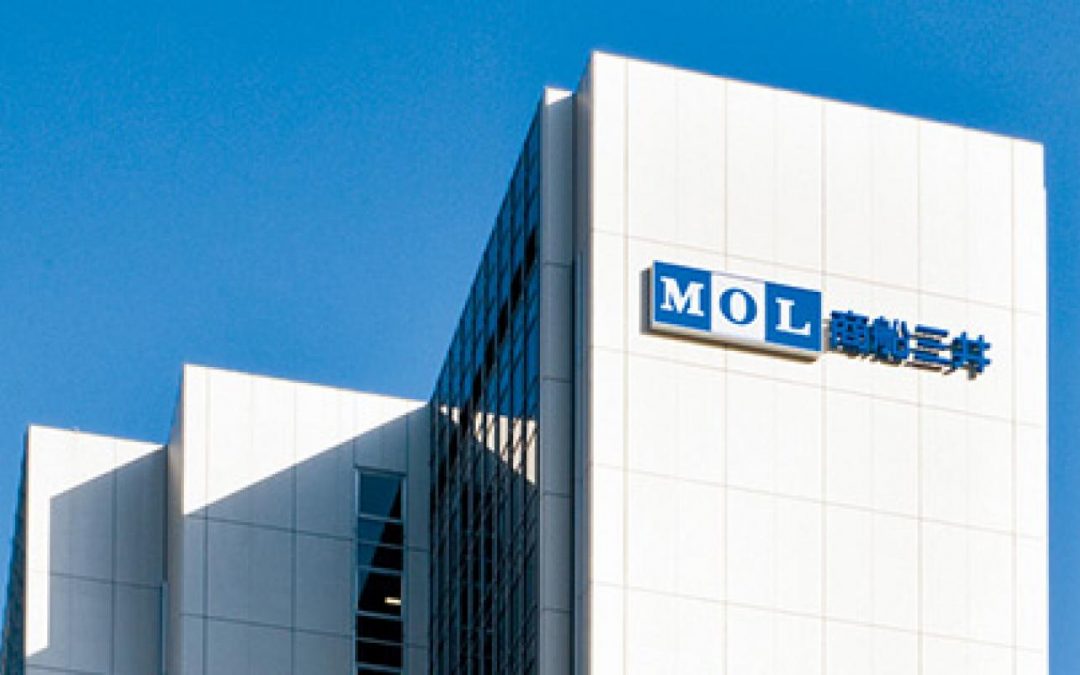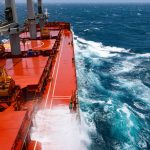Mitsui O.S.K. Lines, Ltd., MOL Coastal Shipping, Ltd., Tabuchi Kaiun Co., Ltd., Niihama Kaiun Co., Ltd., Murakami Hide Shipbuilding Co., Ltd., and Hanshin Diesel Works, Ltd. today announced the decision to build a methanol-fueled coastal tanker. The six companies have long been pursuing a strategic alliance to develop a coastal tanker with a methanol-fueled engine.
The vessel will be jointly owned by MOL Coastal Shipping, Tabuchi Kaiun, and Niihama Kaiun, and on December 28, 2022, those three companies signed a shipbuilding contract with Murakami Hide Shipbuilding. The vessel will be built at Kanasashi Heavy Industries Co., Ltd. part of the Murakami Hide Shipbuilding Group and is slated for delivery in December 2024. It will be bareboat chartered to Niihama Shipping through the three shipowning companies, and then time-chartered to MOL Coastal Shipping through Tabuchi Kaiun. MOL Coastal Shipping will sign a time charter contract with Mitsubishi Corporation, and the vessel will be engaged in domestic methanol transport from the time of delivery.
Based on the strategic alliance, MOL will provide technical support for the development of the vessel and further promote and develop this strategic alliance, while Hanshin Diesel Works will develop a methanol-fueled engine.
Compared to heavy oil, which is currently the primary marine fuel oil, the use of methanol fuel can reduce sulfur oxide (SOx) emissions by up to 99%, particulate matter (PM) emissions by up to 95%, nitrogen oxide (NOx) emissions by up to 80%, and carbon dioxide (CO2) emissions by up to 15%. Methanol fuel is already in practical use and can be supplied and bunkered at about 130 major ports worldwide. The use of methanol derived from non-fossil energy sources, such as e-methanol produced by synthesizing CO2 recovered from various emission sources and hydrogen produced using renewable energy, and biogas-derived bio-methanol, can lead to further reductions in net GHG emissions.
Methanol is used as an environmentally friendly fuel in oceangoing vessels, including five vessels operated by the Mitsui O.S.K. Lines Group, and such use is expected to be significantly expanding in next couple of years. However, this is the first time it has been used in coastal vessels.
The development of the vessel has also been adopted as subsidy project of the “Utilizing AI/IoT, etc. and More Efficient Transport Promotion Project Grant Subsidy (Coastal Ship Innovative Operational Efficiency Demonstration Projects)” by Japan’s Ministry of Economy, Trade and Industry (METI) and Ministry of Land, Infrastructure, Transport and Tourism (MLIT). (Note 1)
The six alliance partners will bring together their respective strengths in technology, know-how, and networks (Note 2) to realize a low-carbon, decarbonized society.
[Outline of the vessel]
Gross tonnage: about 570 tons
LOA: about 65.50m
Breadth: 10.00m
Draft: about 4.38m
Speed: 11.15 knots or higher
Main engine: One Hanshin Diesel Works “LA28M” methanol-fueled marine engine
Source: Hellenic Shipping News





